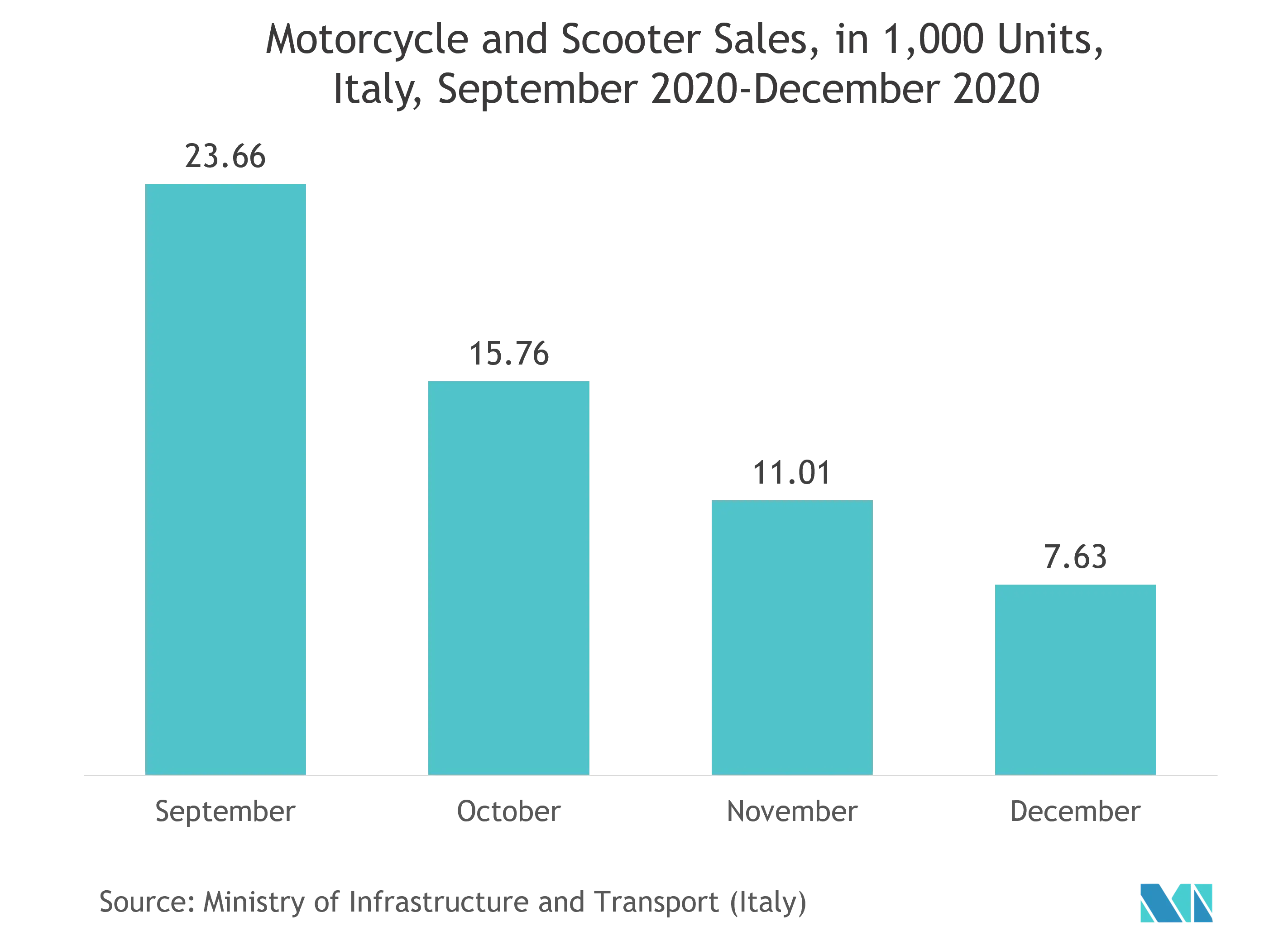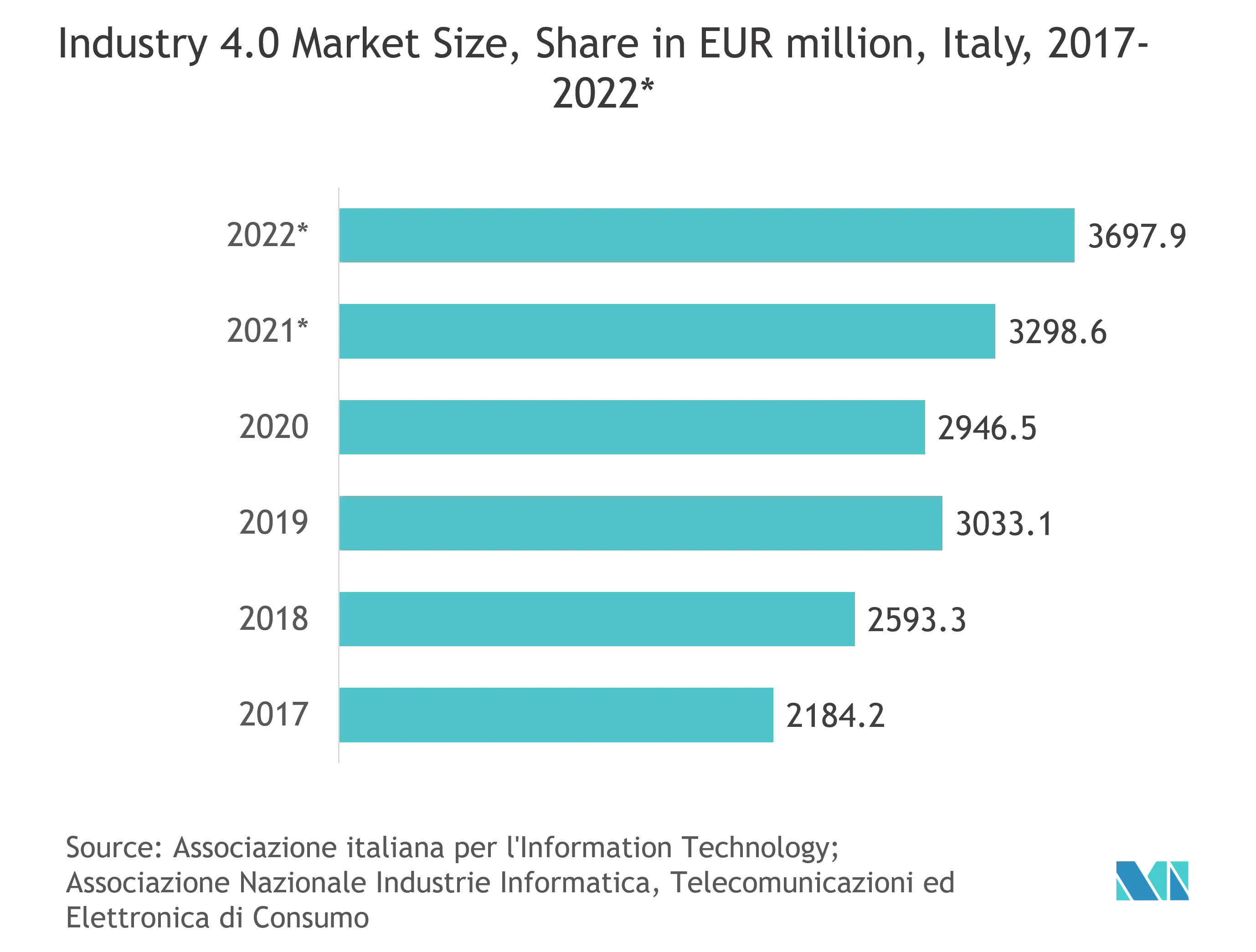Market Trends of Italy Factory Automation and ICS Industry
This section covers the major market trends shaping the Italy Factory Automation & Industrial Controls Market according to our research experts:
Automation is Observing a Significant Increase
- Italy is not commonly known to be at the forefront of the manufacturing sector. However, the government of Italy introduced Industria 4.0 (I4.0) in 2020 and aimed to include strategic guidelines to be implemented in a year. The initiative is focused on transforming traditional manufacturing methods with a focus on skills and advanced technology and supporting the digitization of the Italian economy. It also emphasizes a future based on collaboration with other countries—this driving factory automation in the country.
- In another instance, Comau, industrial automation, and robotics company, support the Milan Competence Center by providing its most innovative products, like the MATE exoskeleton, traditional industrial robots and collaborative robots, the autonomous driving vehicle Agile1500, and thee.DO educational robot. By doing so, Comau aims to support companies in acquiring production processes and tools, enabling the smart factory in an increasingly incisive manner.
- In the past few years, many automakers have automated their plants, and many companies have been identified as tending toward one-stop automation solution providers who can cater to all of their automation needs to gain better returns and efficiency, driving the smart factory market.
- Moreover, the inculcation of industrial control systems in auto manufacturing plants gives companies the ability to keep real-time track of productivity & quality through the data generated through plant connectivity. It may offer mitigating actions to the line supervisors and plant executives. Data analytics can offer a gateway to predicting various outcomes, from the quality of the part being produced to the next machine breakdown.
- Furthermore, with the Italian market posing high potential opportunities for the adoption of automation in the textile industries, various international players see to expand in the country. Jack Sewing Machine Co., a leading Chinese sewing technology provider, acquired Italian jeans automation company ViBeMac SPA in yet another accomplishment.

Robotics is Propelling the Market With Gradual Growth
- The industrial robotics segment consists of articulated robots, cartesian robots, SCARA robots, collaborative industry robots (cobots), parallel robots, piece picking robots, etc. The adoption of industrial robots has been increasing in most end-users and applications as these robots enhance accuracy, flexibility, reduced product damage, speed, and ultimately the efficiency of operations.
- The rapidly growing market for smart production and automation is propelling the use of industrial robotics across the globe. According to a survey by Yokogawa Electric Corporation in 2020, 64% of respondents from companies in process industries pointed out that they are anticipating fully autonomous operations by 2030.
- Also, 89% of the respondents said their companies currently have plans to increase the level of autonomy in their operations. Regarding the current status, 64% of respondents said they are conducting or are piloting semi-autonomous or autonomous operations, while 67% expect significant automation of most decision-making processes in plant operations by 2023.
- There are a lot of innovation practices done in industrial robotics by start-ups as well as established vendors. The focus is on improving the robotic senses of industrial robots, which helps their interaction with the world around them.
- In February 2021, ABB announced its collaborative robot (cobot) portfolio with the GoFa and SWIFTI cobot families, offering higher payloads and speeds to complement YuMi and Single Arm YuMi in ABB’s cobot line-up. GoFa and SWIFTI are designed so that the customers do not need rely on in-house programming specialists. This unlocks industries that have low levels of automation.

